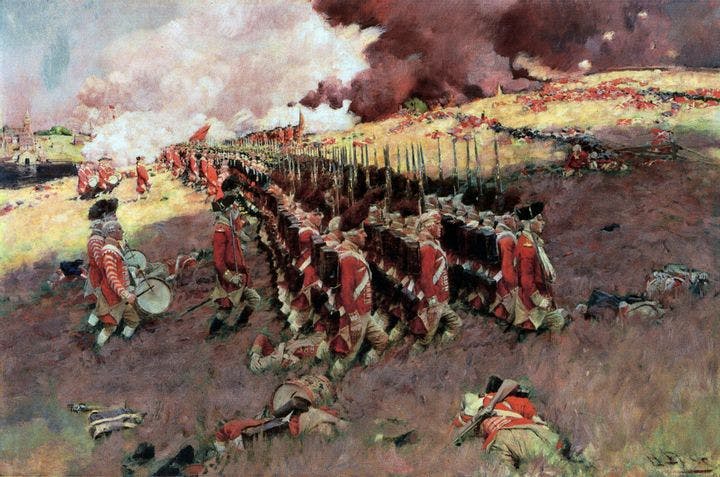Summer 2009
The First Rule of Holes
– The Wilson Quarterly
There are some lessons that never seem to get learned: When you realize you're fighting a lost cause, it's time to quit.
Are there lessons for America in its own revolution that can be applied to Iraq and Afghanistan? In a Dissent symposium on exit strategies, historian Stanley Weintraub, author of Iron Tears: America’s Battle for Freedom, Britain’s Quagmire: 1775–1783 (2005), says he has found a few.
In the 1760s, Britain, fresh from defeating the French in North America, saw “only profit and prestige ahead” in its colonies. First, though, it was deemed necessary to rebuild the British economy, which had been pinched by fighting a seven-year war 3,000 miles from home. To Parliament, it made perfect sense to tax those who had benefited most from the war. But the colonists saw things differently, objecting to their lack of representation in Parliament, among many other grievances. British observers, such as Samuel Johnson, grumbled that the colonists were no less politically excluded than inhabitants of some of the teeming districts of London. Americans, he said, were “a race of convicts, and ought to be thankful for any thing we allow them short of hanging.”
Johnson’s contempt was matched by that of many royal supremacists. In the 1770s, few of them recognized that “the sprawling overseas colonies, more than 1,800 miles north to south, would become more populous than the mother country and would be impossible to subdue.” Yet as early as 1775, when hostilities broke out, Benjamin Franklin was able to do the math. “Britain, at the expence of three millions, has killed 150 Yankees this campaign, which is [£]20,000 a head. . . . During the same time 60,000 children have been born in America.” It was easy enough to “calculate the time and expence necessary to kill us all, and conquer our whole territory.” The Yankee war effort didn’t have to be brilliant, just protracted.
King George III helped matters by dispatching a series of disastrous commanders, “ambitious careerists, with promotions, titles, and parliamentary gratuities dancing in their heads.” As these commanders of noble birth fumbled in the colonies, a London newspaper jeeringly remarked on the contrast with the rebel generals: “a boat builder, a servant, a milkman, a jockey, a clerk.”
In 1776, London dispatched an armada to take New York City and Long Island that would not be surpassed in numbers until D-Day. But the British never managed to wipe out the rebels, while attrition gradually sapped the redcoats’ ranks and spirit. Parliament took to hiring Hessians and other mercenaries. By February 1781, almost six years after the first shot was fired, a member of the House of Commons moved to end “this mad war,” but the measure failed by a single vote. The game finally ended at Yorktown in October, with French intervention tipping the balance: “Third forces are often crucial,” Weintraub notes.
The real failing of the British, he writes, is that they “had no exit strategy other than victory.” Only after defeat did King George III recognize “the first rule of holes: When you realize you’re in one, stop digging.” A lesson learned, but seldom followed. Weintraub adds, “Future governments would pour vast resources into subjugating, yet failing to assimilate . . . the subcontinent of India” as well as large parts of Africa, “all at staggering cost to the home islands. It was always foolhardy to be tempted to stay, and always too late to get out.”
THE SOURCE: "The American Colonies” by Stanley Weintraub, in Dissent, Winter 2009.
Image courtesy of Wikimedia Commons
Up next in this issue
